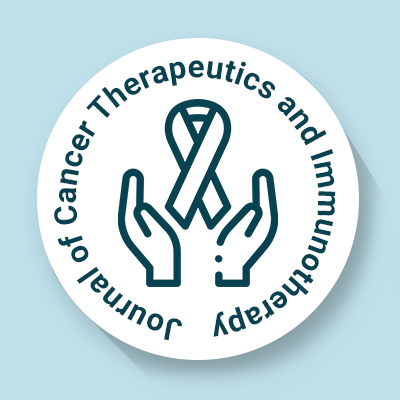
Journal of Cancer Therapeutics and Immunotherapy
OPEN ACCESS

OPEN ACCESS
Melanoma is a serious form of skin cancer that develops when melanocytes, the pigment-producing cells in the skin, begin to grow uncontrollably. It is considered the most dangerous type of skin cancer due to its ability to spread to other parts of the body if not detected early. In women, melanoma most commonly appears on the legs, while in men, it is more frequent on the back. The term 'malignant melanoma' is often used, but medical professionals advise against it since melanoma is inherently malignant.
Early signs of melanoma include changes in the size, shape, or color of an existing mole or the appearance of a new, unusual growth on the skin. As the disease progresses, symptoms may include an itchy mole, irregular edges, varied colors within a single mole, and skin ulceration or breakdown. The ABCDEEFG mnemonic is used to recognize early signs: Asymmetry – One half of the mole does not match the other. Borders – Irregular, jagged, or blurred edges. Color – Multiple shades of brown, black, red, blue, or white. Diameter – Larger than 6 mm (about the size of a pencil eraser). Evolving – Changes in appearance over time. Elevation – Raised above the skin. Firmness – Hard to the touch. Growing – Continuous increase in size.
The primary cause of melanoma is exposure to ultraviolet (UV) radiation from sunlight or tanning beds. Individuals with a family history of melanoma, a high number of moles, or a weakened immune system are at a greater risk of developing this condition.
Melanoma is diagnosed through a tissue biopsy, where a sample of the suspicious skin area is examined under a microscope. Other conditions that may resemble melanoma include seborrheic keratosis, lentigo, blue nevus, and dermatofibroma.
Preventive measures include regular use of sunscreen, wearing protective clothing, and avoiding excessive UV exposure. The primary treatment for melanoma is surgical removal of the affected area. Early detection and treatment significantly improve survival rates, emphasizing the importance of skin self-examinations and regular dermatological check-ups.